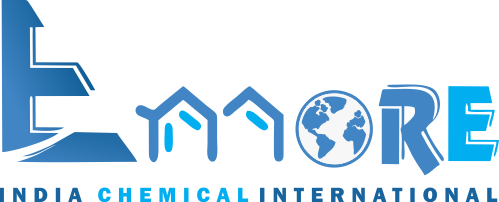DOP Phthalate Plasticizers Manufacturers, supplier - supply in Chennai India
Ennore India Chemicals Bis(2-ethylhexyl) phthalate (di-2-ethylhexyl phthalate, diethylhexyl phthalate, DEHP; dioctyl phthalate, DOP) is an organic compound with the formulaC6H4(CO2C8H17)2. DEHP is the most common member of the class of phthalates, which are used as plasticizers. It is the diester of phthalic acid and the branched-chain 2-ethylhexanol. This colorless viscous liquid is soluble in oil, but not in water. Accounting for an almost 54% market share in 2010, DEHP is a high production volume chemical.PVC is used extensively in sewage pipe due to its low cost, chemical resistance, and ease of jointing. Phthalate plasticizers are essential to the utility of PVC, which is otherwise too brittle.Manufacturers of flexible PVC articles can choose among several alternative plasticizers offering similar technical properties as DEHP. These alternatives include other phthalates such as diisononyl phthalate (DINP), di-2-propyl heptyl phthalate (DPHP), diisodecyl phthalate (DIDP), and non-phthalates such as 1,2-cyclohexane dicarboxylic acid diisononyl ester (DINCH), dioctyl terephthalate (DOTP), and citrate esters.
Use in medical devices
DEHP is the most common phthalate plasticizer in medical devices such as intravenous tubing and bags, IV catheters, nasogastric tubes, dialysis bags and tubing, blood bags and transfusion tubing, and air tubes. DEHP makes these plastics softer and more flexible and was first introduced in the 1940s in blood bags. For this reason, concern has been expressed about leachates of DEHP transported into the patient, especially for those requiring extensive infusions or those who are at the highest risk of developmental abnormalities.
DEHP is a component of many household items, including tablecloths, floor tiles, shower curtains, garden hoses, rainwear, dolls, toys, shoes, medical tubing, furniture upholstery, and swimming pool liners. DEHP is an indoor air pollutant in homes and schools. Common exposures come from the use of DEHP as a fragrance carrier in cosmetics, personal care products, laundry detergents, colognes, scented candles, and air fresheners.The most common exposure to DEHP comes through food with an average consumption of 0.25 milligrams per day. It can also leach into a liquid that comes in contact with the plastic; it extracts faster into nonpolar solvents (e.g. oils and fats in foods packed in PVC). Fatty foods that are packaged in plastics that contain DEHP are more likely to have higher concentrations such as milk products, fish or seafood, and oils. Food and Drug Administration (FDA) therefore permits use of DEHP-containing packaging only for foods that primarily contain water.
